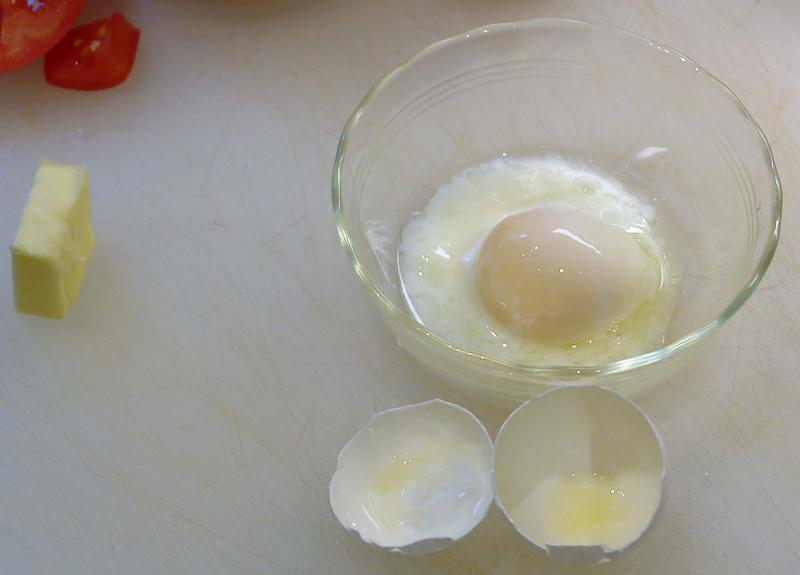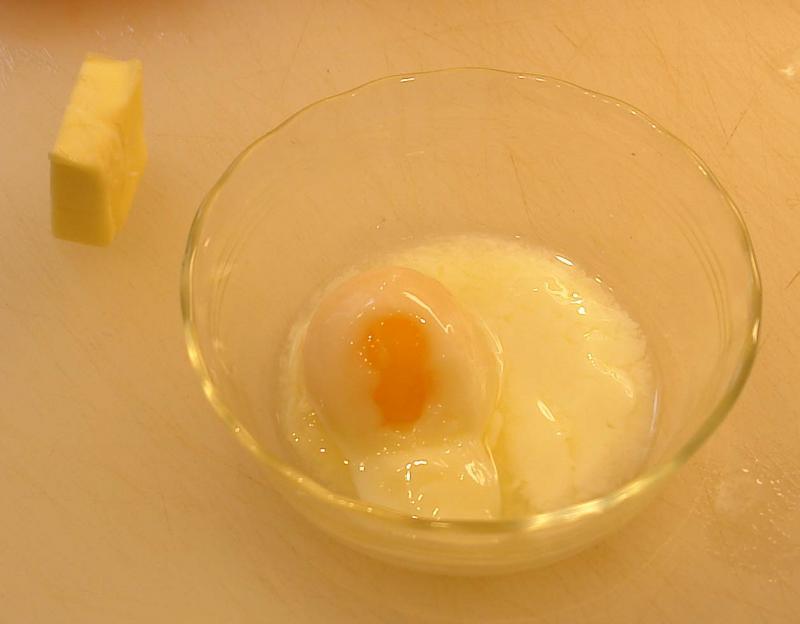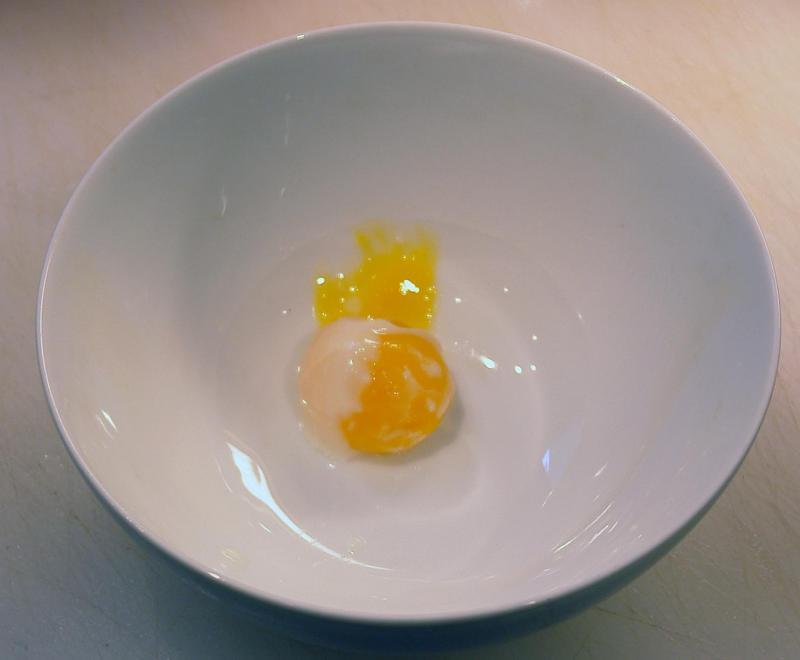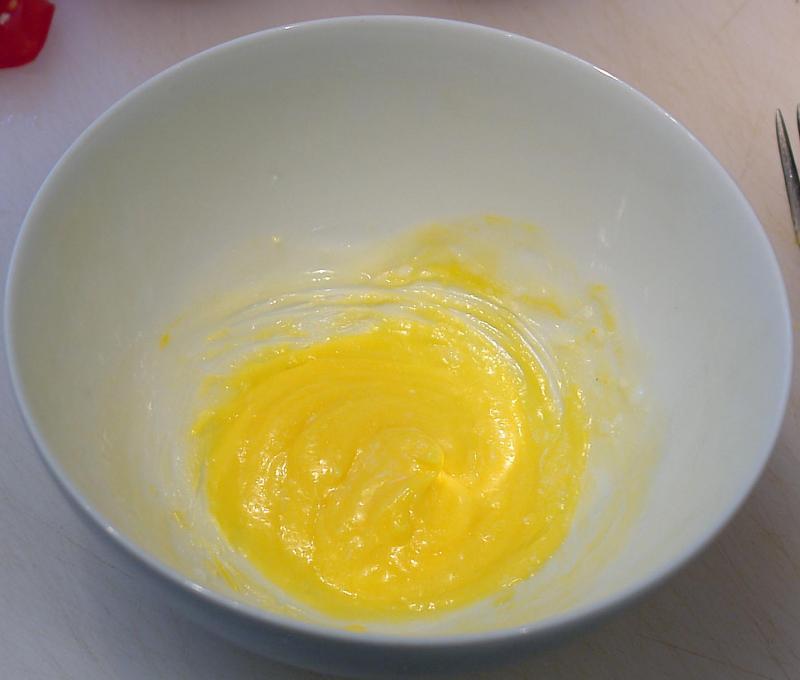Search the Community
Showing results for tags 'Modernist'.
-
Here in Australia the Mosa CO2 cartridges are much cheaper than the iSi branded ones or the Liss ones. Does anyone have experience using these Mosa chargers in an iSi Gourmet Whip? I've found a few sites saying they are compatible, but these are also sites that are selling them. I just thought it would be prudent to check if anyone has direct experience with using the Mosa in and iSi. Thank you.
-
I came across this article just now on TechCrunch about the Palate smart grill. Here is the product's webpage. I do okay with my current sous vide set up and have a pair of Anovas on their way soon. I can't see paying $500 for this plus going out and spending $300+ on an ipad just to work the thing. $800 to cook some steak and salmon??? From what I saw in the video and on the product's website, it seems like it's geared towards smaller servings of protein. I didn't see any mention of vegetables and I'm not sure how it would handle eggs in the shell. I'd like to see a more comprehensive demo performed by some advanced cooks/chefs instead of a pitch tailored to the tech community. Sure, a device that precision cooks and sears is nice; but like a lot of startup technology companies that I hear about, I feel like its creators are trying to solve a problem that doesn't really exist. Of course, if this machine does much more that I'm not yet aware of and the price comes down significantly (like at least 50-60%), I might learn to like it. Your thoughts?
-
For those of you (like myself) without a copy of Modernist Cuisine, the Vacuum Concentration rig can be seen on this page. I have successfully eBay-ed myself into a functioning vacuum concentration setup. Hopefully this thread will not only serve as a chronicle of the various successes and failures I have with the technique, but as a place where others can do the same. If I end up being the only one (dumb enough) to play around with this setup, at least everyone can pitch ideas for what to concentrate next. I know there are a few people here who played around with rotovaps. I don't have the ability to capture solutes, but this idea for this thread is more to discuss the actual products of vacuum concentration, rather than the strengths or weaknesses of the technique (I think that would go in the Kitchen Consumer forum anyhow). First attempt: Concentrated Clarified Orange Juice This idea stemmed from Dave Arnold's agar clarification technique, which I was moderately successful with. The end product had a very mellowed-out orange flavor, and I thought vacuum concentration would be perfect for getting that kick back in it. This attempt was rushed, so I don't have as much data to provide, but the next project (Jack Daniels) was done in a more controlled, recorded manner. 500g of Clarified OJ for ~75 minutes yielded ~160g of clear amber syrup. Vacuum Concentration in action - https://www.filepicker.io/api/file/ZJLGs3YJQbpAV0aV5MAb (sorry for the huge pic, I'll resize future images) End product - https://www.filepicker.io/api/file/mtDDhDrQD21ZYFQrmtek The sauce was very orangey, with a fair bit of bitterness (though not unpleasant) from the citrus. I'm going to try adding it to sparkling wine for a less-diluted mimosa. I don't have many orange recipes, so it'll probably spoil before I use it for something else. I'm reducing a bottle of Jack Daniels right now. I'll post results tomorrow.
-
I like to sous vide large batches of tough cuts such as pork belly and short ribs for 12-48 hours and then freeze them. I usually cook them without marinade. This way, depending on my mood, I can change the marinade/flavor any time I take them out of the freezer. Do marinades penetrate the meat differently when they are raw vs cooked meat? Any disadvantages of marinading after I sous vide? Thanks!
-
(it looks like post may be being truncated because I'm a new member...here is a public google doc with my full question!) https://docs.google.com/document/d/1UOX8o7S6VH3m7nroSL_rRyy_lJQnL85cTK30M9-_JUM/edit?usp=sharing SHORT VERSION: what is the minimum temperature to smoke chicken, beef, pork to impart smoker flavor (my understanding is this requires rendering fat which would be 130-140 but that seems high). How does duration figure into smoking and how does temperature impact duration?
-
Hoping you guys can help... Unfortunately I have just washed both my Gourmet Whip and my Cream Profi Whip and have mixed these up. Is there a way to tell the 2 apart? One has 1102 on the base and the other has 1205. Any help would be greatly appreciated.
-
I've been making chicken liver mousse by frying some chicken livers. I cook some shallots, deglaze the pan with port, reduce it, and then combine all of the above with butter in the food processor and strain it. It seems like the results are kind of variable. I believe this has to do with the step of cooking the livers. Sometimes I get them more cooked, sometimes less. The product often has a kind of gritty texture that some of my family don't like. In the recent posts on modernistcuisine they mentioned making chicken liver mouse by cooking the livers sous vide. In fact, the chef who did this specifically noted the problem of improper cooking of the livers. However, no information was given as to the temperature he used. So I cooked the livers at 131 F for 2 hours and then followed the procedure above. The resulting product was extremely smooth. But it had an astringent aftertaste that ruined the mousse. In fact, I ended up throwing it away. This brought to mind a different chicken liver preparation I had tried in the past where raw chicken livers were pureed with eggs and butter and the mixture was cooked sous vide. That product also had an astrigent taste. So I'm wondering where this astringent taste is coming from and what is necessary to eliminate it. If I sous vide cook the livers at some higher temperature will I be able to get a result which is smooth, and has a flavor similar to the flavor I got when I pan fried the livers?
-
I'm thinking of experimenting with some Liquid Smoke with my sous vide hamburgers, and I'm wondering if anyone has any opinions as to when makes the most sense... 1) brush before bagging 2) brush when coming out of the bag after cooking, but before searing 3) brush after searing, when otherwise all 'done' any thoughts anyone? my inclination leans toward (2), although I'll probably try all three
-
I've got some lamb riblets from a friend's pasture-raised lamb, which I received frozen; I brined the ribs overnight in the fridge and then put them in my sous vide setup at 145f for 36 hours. Unfortunately, I neglected to put plastic wrap over the water pot and due to evaporation my immersion circulator shut off at some point during the night last night. I don't know how long it was off for, but the water had reached room temperature by the time I found it. I wouldn't serve these ribs to anyone else at this point, but I really don't want to throw them away and am wondering how much of a risk I'd be taking by eating them. They've got another 12 hours at 145f left, and then I was going to grill them before serving, so they should get re-pasteurized. The risk I see is if there were enough botulism spores to produce toxin that won't be destroyed by pasteurization. So I my questions are: -- Does meat like lamb riblet generally contain botulism spores in the first place? It sounds like they're much more common in fruits and vegetables, or food that has touched dirt. -- The vacuum bags didn't puff up at all. Does this mean that no significant amount of botulism grew? -- Is botulism toxin just on the surface of the meat? If so, if I dipped the ribs into boiling water briefly to denature any botulism toxin on the surface, would I be making them safe to eat? I know it's easy to say "when in doubt, chuck it", but I was pretty excited about these ribs and that'd be painful. So, how much of a risk is this? Thanks, - Rick
-
The folks from Nomiku have launched a kickstarter campaign for a new version of their circulator... https://www.kickstarter.com/projects/nomiku/new-nomiku-sous-vide-wifi-connected-and-made-in-th
-
I've had luck with sous viding steaks only to bring them up to temperature. But any steaks that require holding for more than a couple hours always dry out and lose a ton of their pinkness. I use Douglas Baldwins tables and have tried sirloin, ribeye, eye of round, etc at 130/131F. I've tried them at 6 hours, 8 hours, and sometimes the much longer 24 hours or more cooks. Ribeyes - of course I only tried at 6 hours once as I was looking for a way to render the fat down a bit more besides applying a lot of high heat. I was trying to get the best of both worlds with this one. The delicious rendered fat of Ribeyes with the perfect medium rare temperature with less chance of human error. The other meats, I was experimenting to see if I can turn leaner, cheaper cuts of meat into something much greater, like many sous vide advocates talk about. I've tried many times, and have never been successful. Like I said, the longer cooks make them lose a ton of their juices, and the meat comes out pale and hardly pink at all, despite being cooked at medium rare. I recently did a side by side comparison of a 8 hour vs 1.5 hour sirloin and the 8 hour was not enjoyable at all. Dried out. The 1.5 was good, but about the tenderness I expect form a traditional cooked sirloin of course. I figured it might be an issue with the microcontroller (Dorkfood DSV) not being calibrated. So I bought a thermapen and pretty much the 3 thermometers including the thermapen I use pretty much agree that the microcontroller is doing a great job (and yes, the bath is circulated). My heating element is one of those Marshalltown immersion bucket heaters. Have any of you had this problem? My only suspicion is that it might be a factor of thickness at this point, but even then, I've tried top sirloin over 1 inch thick and it still comes out dry and pale after 6 hours at 131. I'm not getting this legendary turning cheap cuts into filets with more flavor that I keep hearing about. The only thing I haven't tried is doing a roll/roast. Any advice would be appreciated!
-
Hello, I tried myself on the MCaH Pressure-cooked Chickpea Salad tonight. I followed the recipe in every detail and got some great results with the chickpeas, the dressing and the "toppings" all for themselves. When I tossed it all together as instructed, though, I got a significant different result from what I could make out on the pictures to the recipe, due to the huge amount of dressing. The delicate ingredients are all coated with a thick layer of the mayonnaise-like dressing which results in a very overpowering vinegar-lemon taste. I'm kinda confused: as the ingredients for the dressing are given with such precision I'd think I have to use it all on the salad as opposed to just "add to taste". Am I missing something? Anyone got any similar or different results? Any help is greatly appreciated! Roland
-
I'm used to cooking pork butt sous vide, but I've just purchased a pork roast. Usually I cook at 140 F for three or four days. Should I change the time/temp for a regular pork roast?
-
Wondering what temperature most kitchens cook there food at sous vide? Most places I've worked cook at 62c and hold at 50c wondering what everyone else does? And why? Also is there a difference if u cook at 60c or 70c apart from speed. We probe all the food so would it make a difference?
-
I have been playing around with beets sous vide. I have seen a lot of different times for them ranging from 45 mins at185 f or 85 C I have increased the temp to 188 F and held for one hour dropped it to 187 F for another hour and finished it at 185 F for the last hour and still they are a little too al dente for most peoples taste. This is way beyond the 45 mins I have seen posted for most recipes. I have peeled and cut the beets into 1/2 inch cubes, heated water on top of the stove and plunged the bags into them before submersing them into the bath and started the original temp in the circulator to about 196 F to adjust for the temp loss when dropping the units in. Not overfilling the bags, maybe some more than one layer, liquid in bags at about one third volume and still no great results. I usually braise them in a oven, covered in cold liquid for about 3 hours whole beets and they come out tender. Any suggestions? Thank you
-
At a restaurant last weekend, I had a poached egg, but instead of just cracking the egg into the water it was shot out of an isi siphon. This got me wondering about making very light poached dumplings by putting batter in a siphon and dispensing into a poaching liquid (or even, if I weren't worried about the splatter, into a fryer). Has anybody tried this? Does it work? Thanks in advance, Andrew
-
So I recently purchased a vacuum chamber sealer VP215. I love to do quick marinades and some of my marinades include the use of garlic, given that it's advised not to use raw garlic when using the vacuum chamber, I'm wondering how you guys work around this. Also I have a question about quick pickling. If I quick pickle in the vacuum chamber sealer and the recipe calls for a few cloves of garlic, is it okay to put those in? TIA
-
Hi there, I'm giving my first steps in modernist cooking. I recently bought a starter kit with some of the main products, and started trying out with (frozen) reverse spherification. After doing a couple spheres, I still have (or i think I do) a good sodium alginate bath. My question is: can I store it in the fridge to use later? If so, for how long? Is there any way of knowing if the bath is still 'active' (other than dropping something in it and see if it works)? I search an answer for this all over the web (and in the forums), but didn't find any. Thanks! Mauricio.
-
Hi folks. One of the reasons I found and joined these forums is from my research on the internet pertaining to sous vide cooking since there's relatively little out there. I'm aware of Baldwin and Keller and the likes, but every so often there's an ingredient or product that I cannot find anything at all on, as in the case of my recent purchase of fresh Venison/Brisket sausage. My separate research on both venison and brisket call for 1-2 days, but being in a sausage form, I was a bit hesitant to go this long. I started it at 140 for about an hour, then rethought thinigs since it's beef and deer only and lowered the temp to 133 and cooked it overnight for about 8-9 hours. It looked like some of the liquid was exiting the sausage, so I pulled it out and placed it into an ice bath for over an hour and now it's in my freezer. I also had no idea what part of the deer was utilized. Loin calls for a far shorter time than other parts. Should I have gone longer than 8-9 hours being brisket and venison? My intuition told me not to go anywhere near two days. I didn't want a lot of liquid leaving the sausage, nor did I want to change the texture of the meat. These babies will be finishing on the grill, so they will get more cooking time there. Thoughts? Suggestions? Thanks in advance.
-
Id like to start a thread on uses for previously SV’d egg yolks. Hats of to the Anova group for the term Precision Cooking. I like it, but it has so many more letters than SV Sooo Ill use PCook for SV. I can afford 3 more letters, after all. But this is not about terms, what ever merits they might have. Its about the PCook’d yolk. Easy to do in Bulk, No plastic, just the natural shell. chill, dry, put back in the refig. and use ‘ at will. ‘ Polyscience’s chart is nice : https://www.cuisinetechnology.com/_pdf/SousVide%20Temperature%20Reference%20Guide.pdf In the Mayo + thread I got the idea to add a yolk or two to Hellman’s and see what’s up Here it is: http://forums.egullet.org/topic/148803-mayo/ First , I brought out some frozen ‘SV’ butter : Yes, its plain butter I routinely get when on sale, and 6 sticks fit nicely in the 8 x 10 SV Bag. Its of course not heated ! The bag prevents freezer burn, and Freezer Flavor from migrating into the butter. As I need a stick, I cut open the bag, take out a frozen stick, and quickly reseal the bag so little moisture condenses on the next seal. N.B.: the bag has already given up one stick Resealed, back in the freezer for the 4 sticks. Here is a PCook’s egg, cracked open directly from the refrigerator. ( not really water bath PC, these were left over from some experiments w the CuisiSteamBoy .) There is a thread on that if your’e interested. This is exactly what a water-bath egg looks like cracked open. Note there is some white albumen in the shells, and the yolk is coated in cooked whites with quite a bit of loose white ‘ on the side’ Note the white easily ‘peels’ off the yolk. The yolk w most of the white removed was placed in a bowl: The Knob of butter, which you see above was microwaved until soft, with a bit melted. This was whisked into the plain yolk: Its a bit hard to see, but this mixture is fairly stiff, and holds its shape. Its still a bit cool. I did not heat up. Added a bit of salt and tasted it. Delicious. Added a drop of two of lemon juice, even better. If you can Precision Cook the whole egg, to what ever temp on the chart correspond to yolk that pleases you, you can chill and keep these eggs in the refrigerator for ‘Long Time’ they are after all pasteurized. You might even develop a liking for several different yolk textures. They are a tight fit as you can see on the chart. With a seasoning / herb / flavor profile of your choice, made well in advance, you have a decent “ ---aise “ of the butter school any time you want one. Work time : about a minute. Also available for 1 minute orders the Mayo + “ ---- aise “ Fantastic , correct, if you are of the ‘ ---aise ‘ school of sauce. You will have to run around the block many many many more times, let me warn you in advance, if you choose to use yolks this way. So if you PCook eggs, what might you do w the yolks ? For Whites , see the SV Eggs thread. Bon Apetite.
-
I was wondering if anyone else has tried making Heston Blumenthal's exploding chocolate cake. One of the ingredients in the crust is "popping sugar", which is basically unflavored poprocks. My understanding is that the chemical reaction that releases the C02 from the sugar is caused when water is introduced, and that the sugar is stable in a fat mixture. However, as soon as I added the mixture to the crust it started popping away... I added some extra sugar on top of the crust, but when I added the chocolate, it started popping again...... I'm a bit worried that I'm going to miss out on this special effect. I'm sure it will taste good anyways...
-
I'm cooking some pork belly sous vide (http://www.seriouseats.com/recipes/2013/10/sous-vide-pork-belly-bun-pork-braise-mayonnaise-quick-pickled-cucumbers-recipe.html), and the recipe calls for putting a marinade in the vacuum bag with the pork. I'd also like to make the meat a few days in advance of when I serve it. Is it important to remove the meat from the marinade after SV? The recipe says you can leave the meat in the vacuum bag for ~two weeks before serving, but I'm concerned that this would basically add a few extra days of marination and make the meat too salty. Thanks for any advice!
-
I'm attempting ChefSteps' braised pork belly recipe here: http://www.chefsteps.com/activities/braised-pork-belly The pork is has been in the brine (equilibrium version) for a bit over 24 hours, but as I look over the math again I'm a bit worried about the final salt concentration - if my calculations are correct it should equilibrate at around 2.5%, which seems very high for a brine (my copy of MC seems to agree). Has anyone attempted this before? Is my math off or does that seem high to anyone else? I suspect maybe the idea is to serve this in small portions as an accent rather than as a main protein... Assuming I'm not out to lunch...to salvage I'm thinking I might be best to take it out after 48 hours, soak in a few changes of fresh water for 2 hours (per MC, roughly following the high-concentration brine method, though at a lower salt concentration and for less brining time...), then re-seal for 24 hours to let the salt concentration even out in the meat. Last thing I want to do is oversalt and ruin this nice piece of meat, and it needs to be ready to cook by Thursday morning...any advice (or even words of encouragement) would be greatly appreciated!
-
Has anyone tried to Sous vide live shellfish in a broth etc? I know that you would have to pull a lesser vacuum on this to allow the shells to open, I was thinking probably in the range of 50% to 60% and you would have to sous vide immediately to avoid suffucation of the shellfish, but you could possibly hold a couple hours for pick up at lower temp. I am thinking about possibly clams or mussels. Would love to know if anyone has tried this. Thank you
-
When I am home curing pork, say to make guanciale, pancetta, or coppa, I typically put the meat, cure #1 or #2 depending, spices/herbs together then vacuum seal and keep at about 38F it until I'm ready to do whatever I plan next for it, such as air curing. Rarely is it left in the bag for very long...the longest stretch has been 2 weeks. It has always been successful for me. This time I have a situation where I have several cures which have had to sit vacuum sealed for a very extended period--nearly 4 months. I am confident the temperature was controlled under 40F the entire time. Given the length of time in an anaerobic environment, my first instinct was to toss them out due to fears about botulism. But the more I think about it, I'm questioning whether they might be ok--they are well coated what is effectively a wet cure of salt and sodium nitrate. Importantly, these only have #1. My major concern is the potential for botulism. Secondary concerns would be texture or salt content issues. I have not yet opened the packages, but all visual indications are good--great color, good firmness, no visual mold, discoloration or other visual cues. Obviously putrid odors would require that I trash them, but a lack of putrid odors doesn't rule out botulism toxin. Thanks for any advice!

















